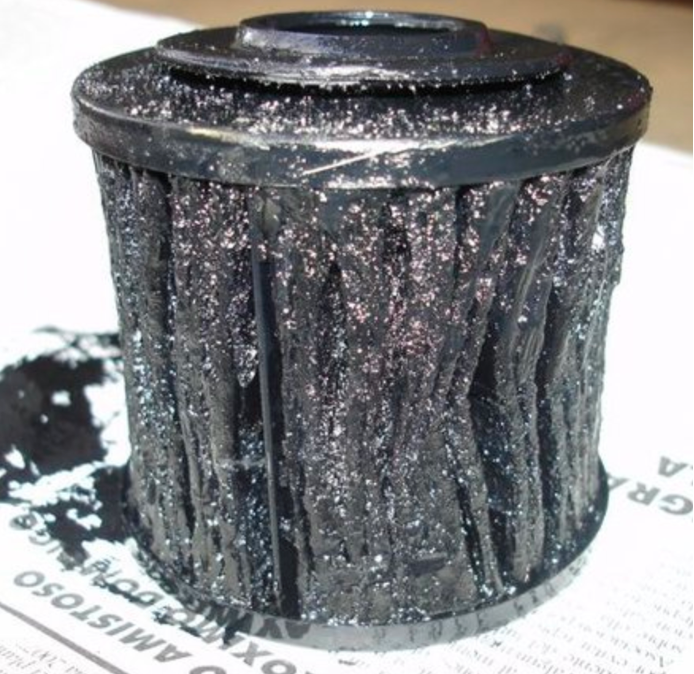Low Oil Pressure At Idle: Quick Diagnosis and Easy Fix!
Insufficient oil lubrication at idle speed can happen for some common reasons. First, the oil gauge might be reading wrong. The switch or sensor that runs the gauge could go bad. These parts get dirty or wear out over time. Second, oil flow gets blocked. The filter might clog up or the line could spring a leak. Old thick oil can get sluggish too. It doesn’t flow as well as fresh thin oil. Third, inside the engine, worn parts let oil slip by. The oil pump loses pressure if its gears wear down. Bearings and other parts get loose with age. Gaps open up for oil to escape. Luckily, you can fight back against low pressure. Regular maintenance helps avoid most issues. Change the oil and filter as recommended. Use the right viscosity oil for your engine. Check for leaks and fix them fast. Clean sensors and change bad switches or gauges.
If your car is idle or stopped while the engine is running and you notice that the oil pressure gauge is not reading high, it means that your vehicle is shaking and making a rattling noise at idle due to low oil pressure.
In this post, we’ll show you how to diagnose and fix the low oil pressure issue of your car while it is idle.
Note: If you already have a preliminary knowledge of how oil pressure develops in the engine, you can jump straight to the causes of low oil pressure at idle.
For you all, I have developed a tool to assist in car issue diagnosis. It directs you in simple steps. Don’t forget to navigate it.
What is Oil Pressure In a Vehicle?
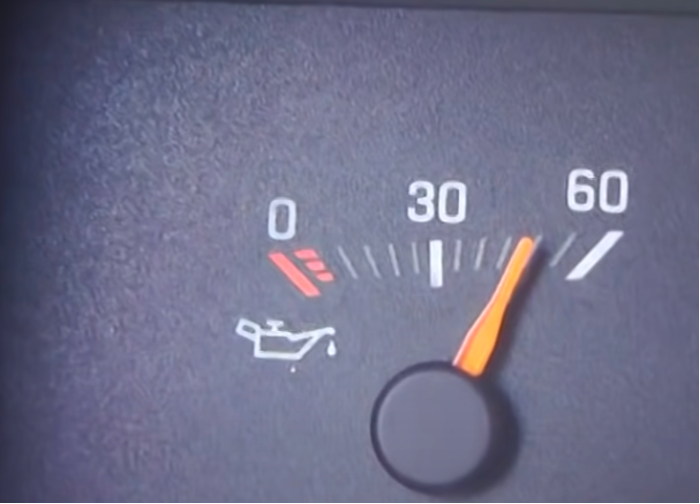
The oil in your car is like blood flowing through your body. It carries important stuff to all the moving parts to keep them working right. The oil pump pushes the oil through your engine with a certain amount of pressure, measured in pounds per square inch or PSI.
Your oil pressure gauge shows you this PSI, like a blood pressure cuff for your car. It’s an important health check! The amount of pressure depends on things like:
- How much oil is in the tank – More oil flowing means more PSI.
- How fast the engine is spinning – Higher RPMs take more pressure to keep things slick. Kind of like your heart beats faster when you exercise.
If the PSI reading seems too low, here’s some possible reasons:
- The oil filter is clogged, so less oil gets through – Like cholesterol blocking an artery.
- The oil is dirty and sludgy – Old oil doesn’t flow as well. Time for an oil change!
- There could be a problem inside the engine – Parts wearing out or breaking can block or leak oil. Sort of like heart or valve problems.
How Does Oil Pressure Work in Engine?
The oil pressure is generated by the engine through the movement of pistons within the cylinder.
The oil pressure is the force pushing the engine oil through the oil pump to engine oil channels, pipes, and filters. Oil pressure is determined by the thickness of oil and its resistance level as the oil flows through the engine’s channels.
Check out the video below to understand the importance of oil circulation in an engine.
The engine runs rough when the oil pressure is low. Friction between engine moving parts is prevented by the oil pressure. The engine will run rough if the oil pressure is low.
The oil pump must also spin faster when a car speeds up. This generates more oil pressure to properly lubricate the engine parts as they move quicker and get hotter.
So as more power goes to the engine during acceleration, the oil pressure rises as shown on the gauge.
Just as oil pressure rises with speed, a certain oil pressure is needed at idle too. Between 15 and 70 psi is the minimum oil pressure when stopped or idling.
The idle oil pressure depends on the engine type, condition, oil grade, operating temperature and idle speed.
The cold idle oil pressure of a normal engine is 40 to 65 psi. The hot idle oil pressure of a normal engine is 10 to 30 psi.
As the mileage increases, the clearances between engine parts grow from wear. Thus, the oil pressure drops as mileage rises.
If oil pressure is low, the senders will trigger a dashboard warning light.
If oil pressure drops below the minimum while running, the engine will stall. This could be from low oil pressure due to poor maintenance or a leak.
What Are The Symptoms of Engine Oil Pressure Warning Light On at Idle?
Here are the symptoms of engine not getting enough oil pressure while idling:
- Engine overheating
- Illumination of low oil pressure warning light on the dashboard
- Illumination of the check engine light
- Misfire and Rough idling of the engine on cold startup
- Knocking and ticking sound
1. Illumination of Low Oil Pressure Warning Light on the Dashboard
The first symptom of low oil pressure at idle is a low oil pressure warning light on the dashboard. If the oil pressure sensor senses that the oil pressure is too low, it will activate the low oil pressure warning light.
2. Engine Overheating
The motor oil inside your engine soaks up heat as the engine runs. When oil pressure drops too low at idle, it can’t absorb enough heat. This causes the engine parts to get overly hot and overheat.
Oil pressure also keeps engine parts lubricated. Low pressure at idle increases friction on the crankshaft, camshaft, and bearings. More friction means more heat. Too much heat can damage these engine components. Regular oil changes help maintain proper pressure.
3. Misfires and Rough Idling on Cold Startup
A misfire happens when a spark plug fails to ignite the fuel-air mixture in the cylinder. This can make the engine run rough or misfire when first started.
A part called the cam phaser uses oil pressure to adjust valve timing. Low oil pressure can damage the cam phaser. Then the valves no longer open and close at the right time.
Improper valve timing leads to inefficient combustion. That’s what causes the rough idle when you first start the engine. Proper oil level and changes help prevent cam phaser issues.
4. Ticking or Knocking Noises
Low oil pressure at idle can also produce knocking, ticking or whining noises from inside the engine. This is usually caused by too little oil reaching the main and rod bearings.
The main bearings support the crankshaft within the engine block. The rod bearings connect the crankshaft and the connecting rods.
When oil pressure drops too low, these bearings don’t get adequate lubrication. Less lubrication leads to more friction and wear. That’s what produces the ticking or knocking noise.
From the picture below, you can understand the main and rod bearings in a better way.
5. Illumination of the Check Engine Light
Like low oil pressure light, there is also a check engine light on the dashboard that shows that something is a problem with the engine.
Check engine light usually illuminates when there is misfiring in the engine, which can be caused by low oil pressure as discussed above.
What are the Causes Of Car Engine Oil Pressure Low at Idle RPM?
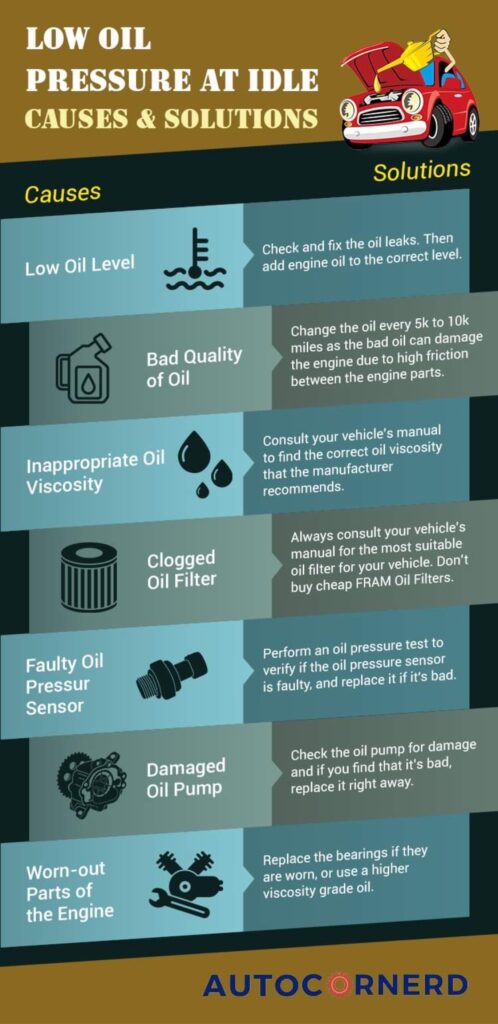
Here are the causes of low oil pressure at idle:
- Low oil level
- Bad quality of oil
- Clogged oil filter
- Faulty oil pressure sensor
- Faulty oil pump
- Worn-out parts of the engine
1. Low Oil Level
Low oil level in the oil pan can be the cause of low oil pressure at idle. You can measure the oil level from the dipstick mark.
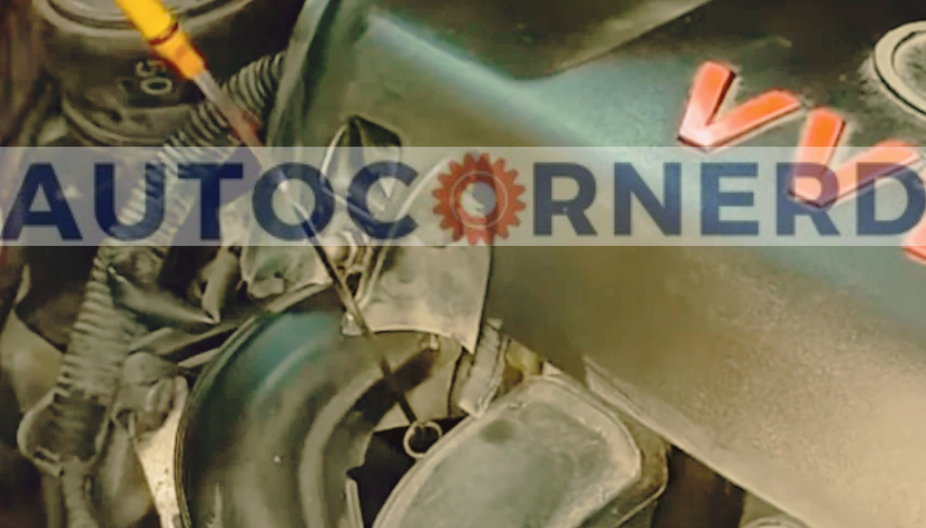
The dipstick under the hood shows you how much oil is left. If the oil level goes below the bottom mark on the dipstick, you could be in trouble.
That bottom mark means the minimum oil needed for safe driving. Below that, and the oil pump can’t keep up. Your engine starts running with low oil pressure. That’s a risky situation. The engine parts aren’t getting enough lubrication.
What happens if you keep driving with the oil below the bottom dipstick mark? Friction builds up, parts overheat, and the engine gets damaged. No good.
How do you know when the oil level drops too low? Watch for signs:
- Check the dipstick regularly. Only add oil when it’s below the bottom mark.
- Listen for new engine noises. Knocking or rumbling could mean low oil.
How to fix?
Here is how to fix low oil level in an oil pan:
- Add engine oil to the correct level.
- Check if there is a leak in the oil pan.
- Check the gallery gaskets as the leaking oil can also cause a low oil level. Replacing gallery gaskets is a pretty expensive and invasive job.
- Check oil pan gaskets.
- Locate the oil rear and front seals with the help of a manual, and check if they are worn out. I would recommend you first check the rear main seal that keeps oil sealed inside the rear of the engine, where the crankshaft connects with the transmission. I found this guide helpful for replacing oil seals.
I found this great video that is demonstrating when a gallery gasket needs to be replaced.
2. Bad Quality of Oil
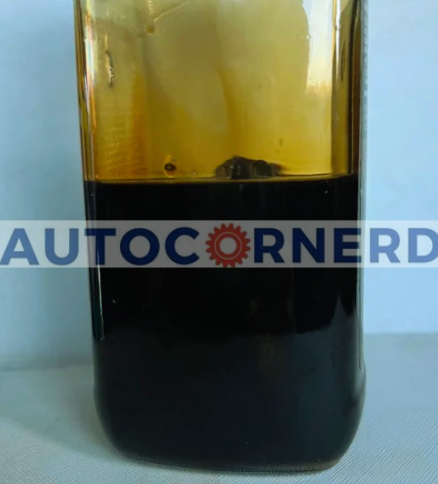
Bad oil quality can also cause low oil pressure at idle. With time, motor oil becomes thinner because of engine heat, due to which it cannot maintain the desired oil pressure. As a result, the oil starts to lose its temperature-viscosity properties.
Also, oil becomes dirty when it flows through different parts of the engine. Not changing the oil cause sludge buildup, which will block the oil passageways.
This impacts the ability of the oil to protect the engine from wear and corrosion, and its ability to clean the engine.
Due to this, engine oil properties are also affected which can cause low oil pressure at idle. Check out this guide in which it has been explained how dirty oil looks when you check it through a dipstick.
Ultimately, when the oil is bad due to late oil changes, the engine can become damaged due to high friction between the engine parts.
It is necessary to change the oil after every 5k to 10k miles so that the optimum oil pressure can be maintained in the engine at idle.
Also, see my vehicle maintenance schedule lookup for more details.
3. Inappropriate Oil Viscosity
If the oil viscosity is too low or too high, it can cause low oil pressure at idle. I would highly recommend you first check out my guide on the importance of the viscosity of oil in vehicles. In this guide, I have explained when to use 5w30 oil instead of 5w20.
Each engine is designed to use a motor oil of a certain type and viscosity grade based on the tolerances of engine parts, such as bearings.
Oil viscosity shows how easily motor oil can flow around the engine at any specific temperature.
If you use motor oil during extreme cold temperatures, it can be beneficial in the cold-start lubrication. But in summers, the motor oil will flow too thin that it will cause low oil pressure at idle.
That’s why engineers have introduced multi-grade motor oils that are formulated for both hot and cold temperatures.
Old vehicles with high mileage use high viscosity oil, such as 10w30 or 5w30 as the clearances between the engine parts tends to increase as the engine travels several miles.
I would highly recommend you to consult your vehicle’s manual to find the correct viscosity grade of oil. Moreover, in the owner’s manual, the type of motor oil has also been mentioned.
If the manufacturer recommends using synthetic oil, you should not use conventional motor oil as synthetic motor oil is more stable at extreme high and low temperatures.
4. Clogged Oil Filter
Clogged oil filter is a common reason for low engine oil pressure. The oil first passes through oil filter before it flows through engine oil galleries.
Oil filter in the engine is used to clean the debris and dirt out of the motor oil. If the oil filter becomes clogged with debris, it will deprive the engine of its necessary oil supply. As a result, there will be low oil pressure at idle, the engine will run dry and it won’t function properly.
When changing oil filter, keep in mind that it should be in accordance with the OEM specifications. Don’t buy cheap FRAM Oil Filters. Always consult your vehicle’s manual for the most suitable oil filter for your vehicle.
Check out the video below to know about the symptoms of a bad oil filter.
5. Faulty Oil Pressure Sensor
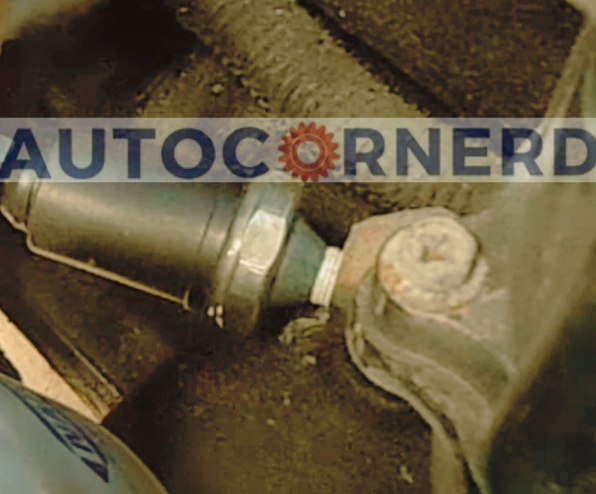
The oil pressure sensor is a little device that feels the actual oil pressure and sends electric signals to report back to the engine control unit.
The oil pressure sensor works its magic using a spring and diaphragm to sense the pressure. Where it’s located depends on things like the make, model, and type of engine.
When the engine control unit gets the electric signals from the pressure sensor, it passes that information along to the vehicle’s oil pressure gauge and warning light on the dashboard. If the oil pressure dips lower than the preset level, the sensor alerts the engine control unit, which then lights up the warning so the driver knows something’s up.
Now, there are chances that the oil pressure is fine at idle, but the faulty oil pressure sensor is sending wrong signals to the engine control module, due to which wrong oil pressure is displayed on the gauge and the oil pressure light turns on the dashboard.
How it becomes faulty?
There are three possibilities that the oil pressure sensor is faulty:
- Spring inside the sensor has worn out
- Oil is leaking out of the pressure sensor
- The electrical part is all covered with oil
How to test?
To verify if it is the faulty oil pressure sending unit that is showing low-pressure signals to the pressure gauge, you can perform an oil pressure test by following these steps:
- Turn off the ignition switch.
- Set the hand brake.
- Open the bonnet of your vehicle.
- Locate the oil pressure sensor. You can take help from the owner’s manual.
- Remove the oil pressure sensor with a wrench.
- Screw the oil pressure test kit into the port for the engine’s oil pressure sending unit. You can get an oil pressure test kit from here.
- Start the engine and shift it to the neutral position.
- Wait for a few minutes to warm up the engine.
- Check the PSI reading at idle.
- If the oil pressure on the oil test kit lies within the range of normal oil pressure at idle, it means that the oil pressure sending unit is faulty.
I found the below video helpful to understand the oil pressure sending unit.
6. Damaged Oil Pump
The small circular oil pump sits inside the oil pan chamber, constantly spinning to push oil through the engine.
This oil pump relies on precision gears that fit snugly against the pump housing. But over time, those turning gears gradually wear down the pump casing, creating extra clearance space. Now oil slips by without getting pumped through.
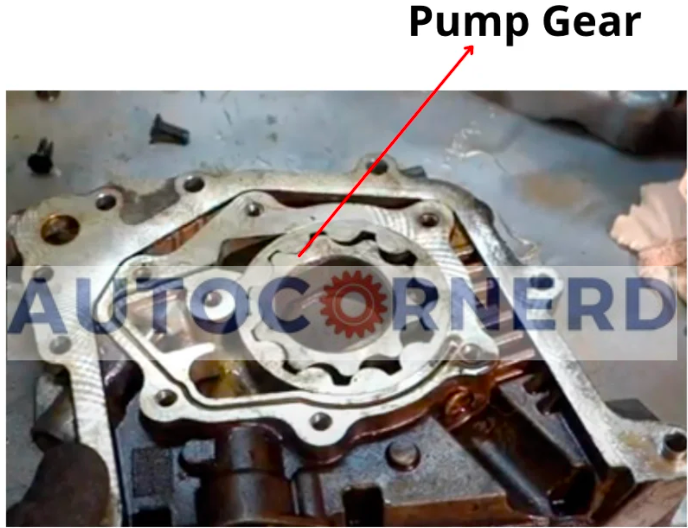
7. Worn-out Parts of the Engine
As the car mileage increases, the clearances between the engine parts also increases due to wear and tear.
Since the oil pressure is determined by the resistance oil faces to flow through engine oil galleries and critical components like bearings, the increase in clearance between engine parts will cause decrease in the oil pressure.
Bearing is an important component you need to first replace as it has a large impact on the oil pressure.
Take your car to the dealership. Measure main and rod-bearing clearances. If they are worn beyond the critical bearing clearance specified in the owner’s manual of the vehicle, the bearing needs to be replaced.
Another fix for low oil pressure at idle you can do when the engine parts have worn out is to use a higher viscosity grade oil. If the manufacturer recommends 5w20 oil, you can use 5w30 oil in such cases.
Can Synthetic Oil Cause Low Oil Pressure?
If you notice the oil pressure reads a bit lower after switching to synthetic oil, there’s no need to worry. Synthetic oil flows more smoothly than conventional oil, so your engine doesn’t have to work as hard.
Synthetic oil molecules are uniform in structure. This allows the oil to glide with less friction. Conventional oil has more varied molecules that scrub against each other and the engine parts.
It’s the steady flow of oil that keeps your engine lubricated and protected, not the pressure. Synthetic flows freely at a lower pressure because it faces less internal resistance.
The oil pump doesn’t have to strain to push synthetic through tight spaces in your engine. Effortless flow means less pressure is required, and your oil pump has an easier time circulating the smooth synthetic oil.
With its strength and slipperiness, a quality synthetic oil forms a protective layer without needing as much pressure behind it. So you can rely on it to prevent wear and friction, even at a lower operating pressure.
What Is The Difference Between Low Oil Pressure and Oil Leak?
The main difference between low oil pressure and an oil leak is that low oil pressure indicates a problem with the engine’s lubrication system circulating oil at the proper pressure, while an oil leak is the physical loss of oil from the system.
Low oil pressure means the oiling system cannot pump oil through all the moving engine parts with enough force. Good lubrication requires an oil pressure between 25 to 65 PSI. Low pressure increases friction and component wear. Causes include a worn-out oil pump, old bearings blocking flow, or using the wrong oil type.
An oil leak occurs when oil escapes from cracks, openings or damaged seals and gaskets. Even a loose connection may allow oil to gradually seep out of the system. While low pressure and leaks are separate issues, they are related. A significant leak reduces the oil supply level, which then leads to lower oil pressure. This causes accelerated friction and wear.


